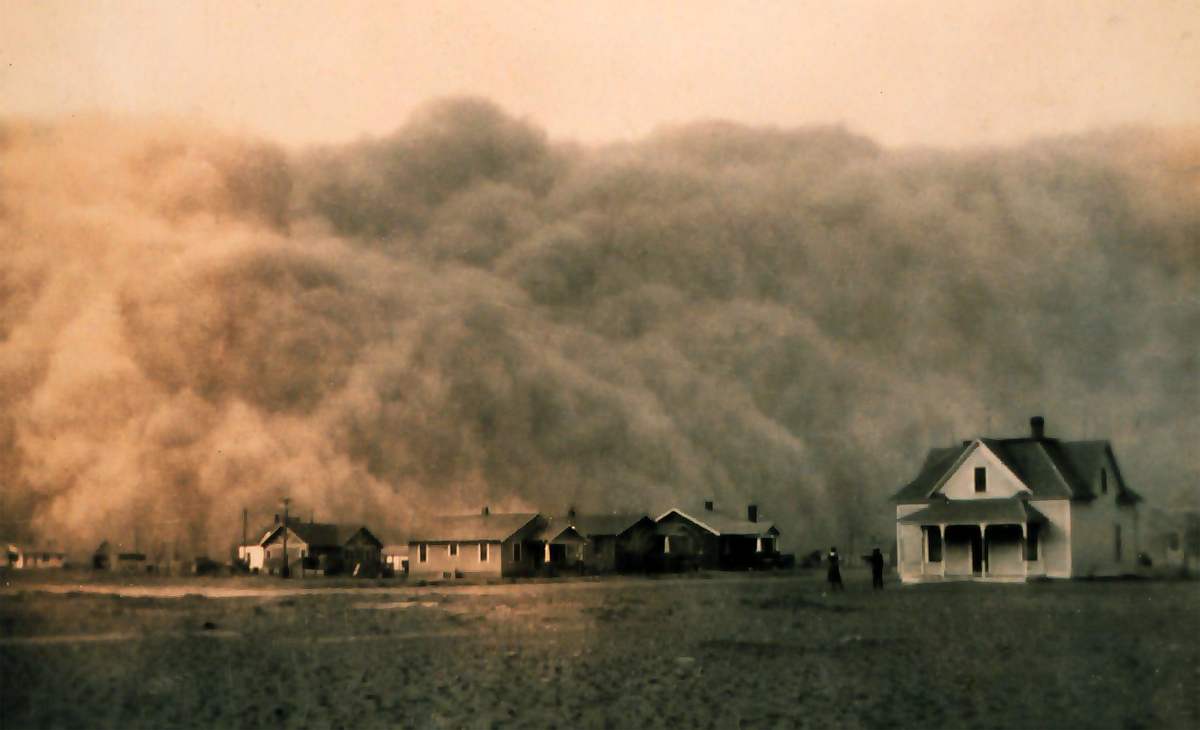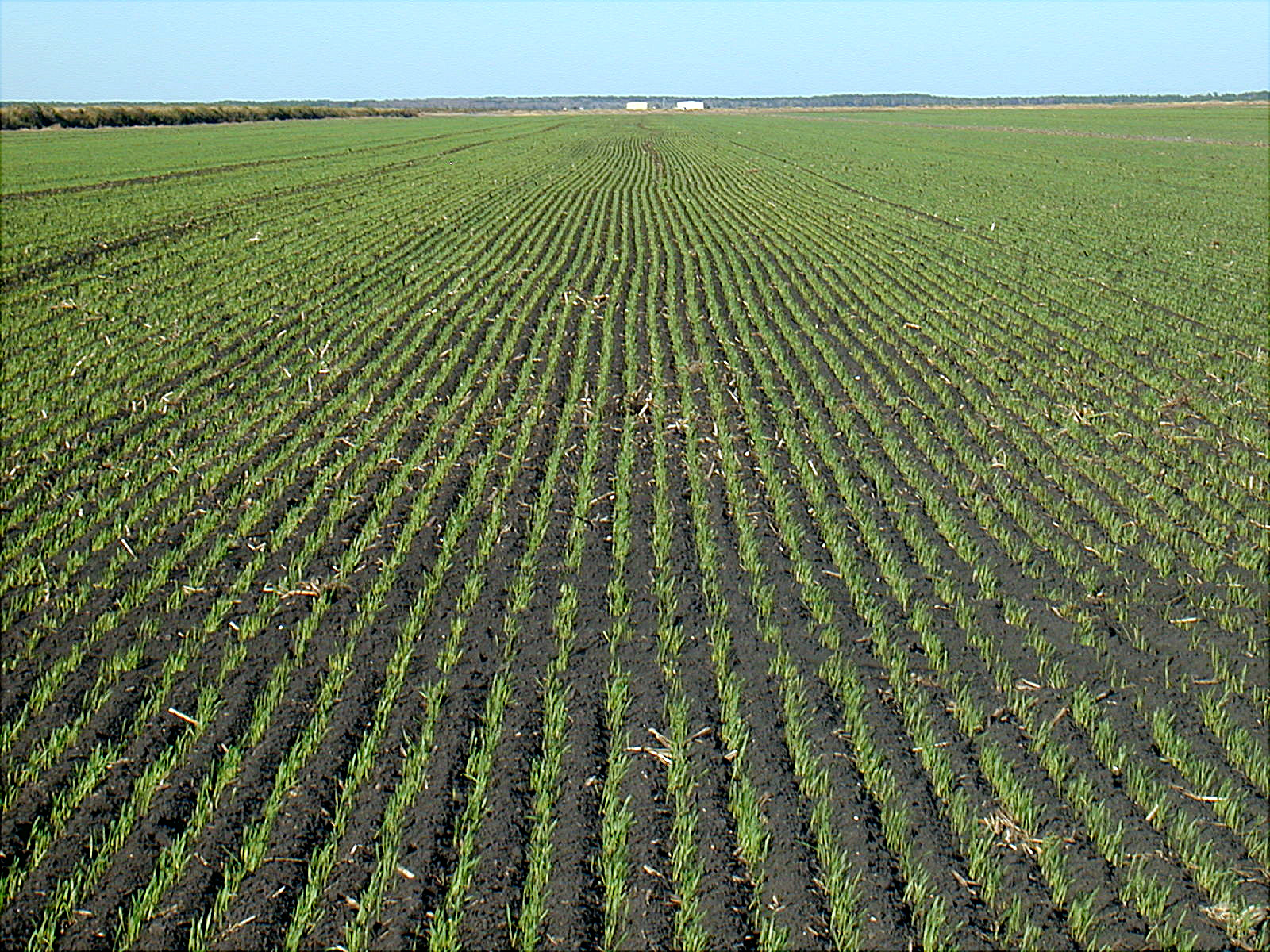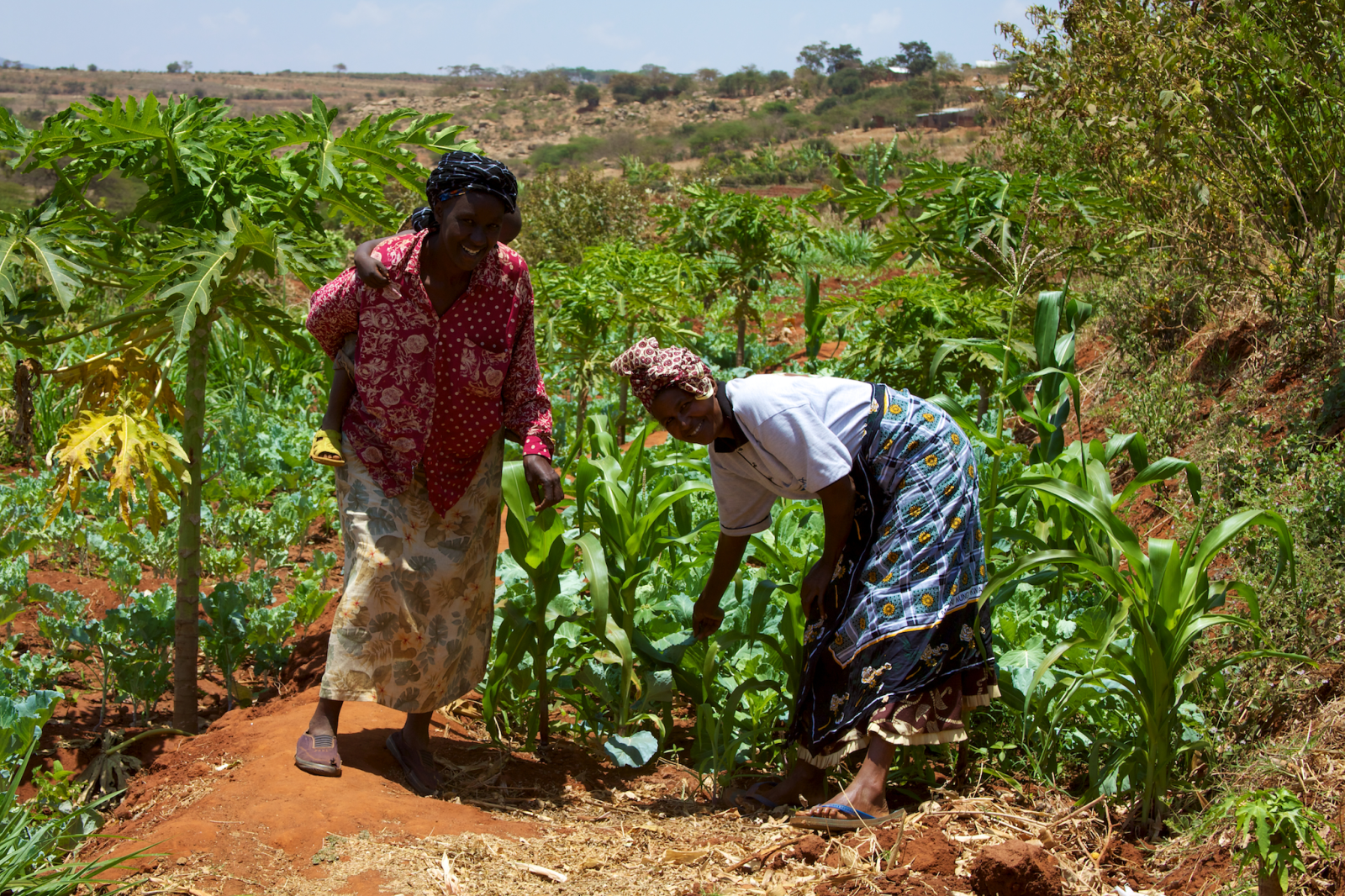Soil Spectroscopy
by Andy Boyd
Today, we see the light. The University of Houston presents this series about the machines that make our civilization run, and the people whose ingenuity created them.
It's hard to forget the images painted by John Steinbeck in The Grapes of Wrath. In the 1930s, poor farming practices coupled with years of drought left much of Oklahoma and the Texas panhandle a dust bowl. Unable to grow anything, impoverished families were forced from their land in order to survive. The event helped spur soil management practices that have made the U.S. the largest exporter of agricultural goods in the world.

Dust storm approaching Stratford, Texas. Photo Credit: Wikimedia

Germination of winter wheat at Open Grounds Farm in Beaufort, North Carolina. Photo Credit: Wikimedia
Unfortunately, much of the world still suffers from poor soil management. Amongst these places is sub-Saharan Africa, where the majority of people live in rural areas and derive their living from agriculture. How bad has the soil become, and what can be done about it?

A 28-member farming group in Machakos, Kenya farms a 4-acre plot where they grow oranges, avocado, vegetables, maize. Photo Credit: Wikimedia
Interestingly, an answer can be found with light, or more specifically, with spectroscopy -- the way light interacts with our material world. The systematic study of spectroscopy dates back to Isaac Newton in his treatise Opticks, but it's been employed using countless variations ever since. Shine light on something and see what's absorbed. Shine light on something and see what's reflected. Spectroscopy covers a lot of territory.
One common use of spectroscopy is to determine what something is made of. Thanks to spectrographs of the sun, we know it consists mostly of hydrogen and helium because we can see the characteristic spectral fingerprints of these two elements.

Fraunhofer Lines. Photo Credit: Wikimedia
And now specialized forms of spectroscopy are being used to analyze soil. While it's possible to do chemical analysis, spectroscopy is faster and cheaper. This opens up new worlds of analysis by making more data available. Rather than teach a group of farmers in a region how to treat soil in general, each farmer can receive individualized information.
Spectroscopy can also be used to evaluate fertilizer, making sure it contains what it should. Adulteration is unfortunately all too common in impoverished regions. Spectroscopy provides a potential means for screening carcinogens produced by molds that find their way into grain. It's a very real problem in tropical regions where virtually all of certain grains can become contaminated.
Yet while the potential benefits are clear, soil spectroscopy faces hurdles. It's relatively new, so researchers are focusing on both what to look for in soil, and the best spectrographic means by which to recognize what they're looking for. The technology could really take off if lab equipment could be replaced by hand-held devices -- a prospect that looks likely in the coming years. And what can we learn from the mountains of data that could be generated?
Soil spectroscopy's just one activity benefitting from multinational support of the World Agroforestry Center in Nairobi, Kenya -- a center whose mission is "to generate science-based knowledge" about agroforestry. It once again goes to show how science can shed light on a wide array of problems.
.png)
Small Scale Farmers in Tanzania are Thriving. Photo Credit: Wikimedia
I'm Andy Boyd at the University of Houston, where we're interested in the way inventive minds work.
(Theme music)
Many thanks to Ed Sulzberger and Keith Shepherd for providing source material and answering my questions in the process of pre-paring this essay. Thanks to Priscilla Files for suggesting the topic of the essay.
About the World Agroforestry Center. From the World Agroforestry Center website: http://www.worldagroforestry.org/about. Accessed October 19, 2016.
Saving Africa's Soils: Science and Technology for Improved Soil Management in Africa. Accessible from the World Agroforestry Cen-ter website: http://www.worldagroforestry.org/sensingsoil/publications.html. Accessed October 19, 2016.
Spectroscopy. From the Wikipedia website: https://en.wikipedia.org/wiki/Spectroscopy#Classification_of_methods. Accessed October 19, 2016.
This episode was first aired on October 25, 2016